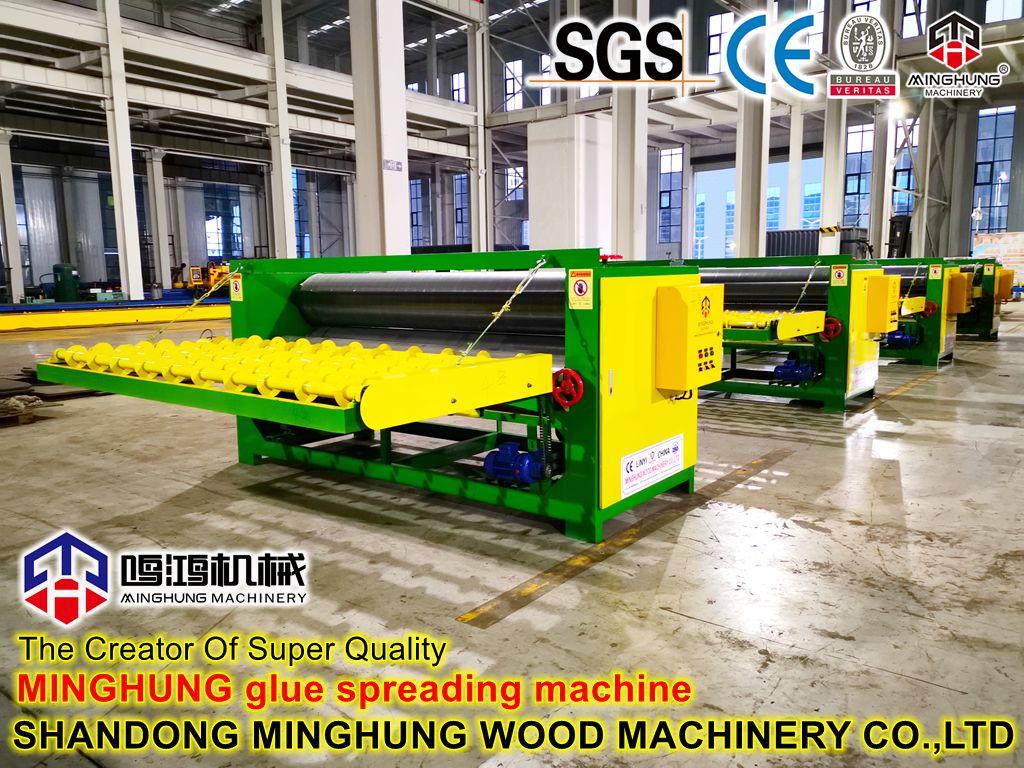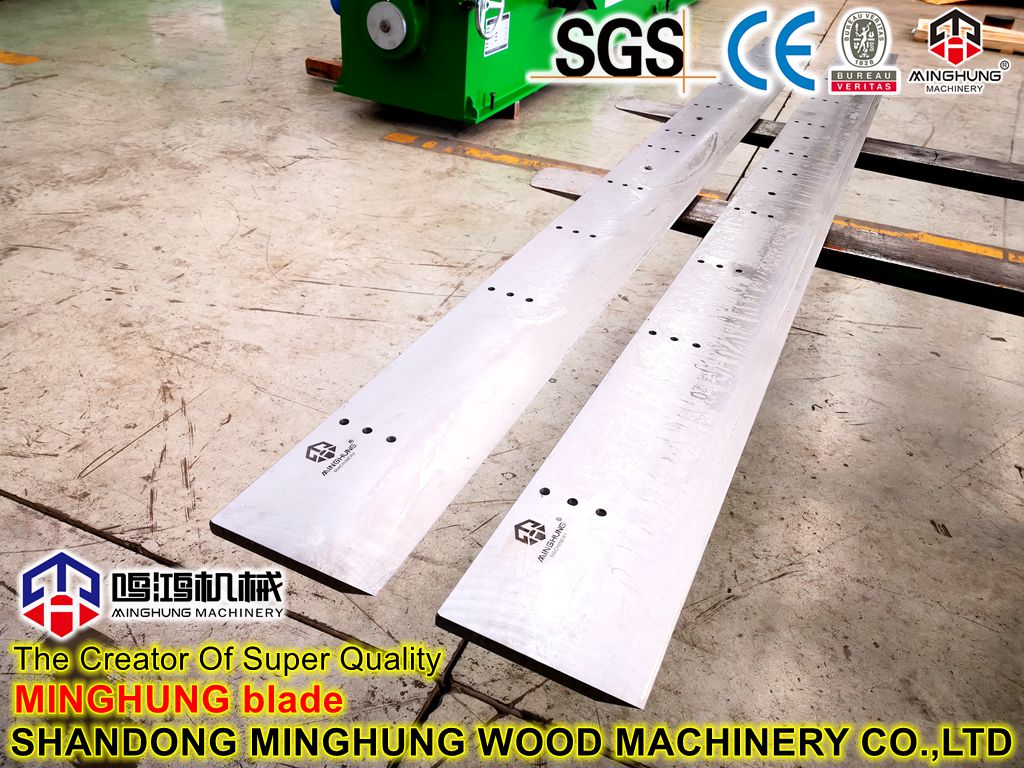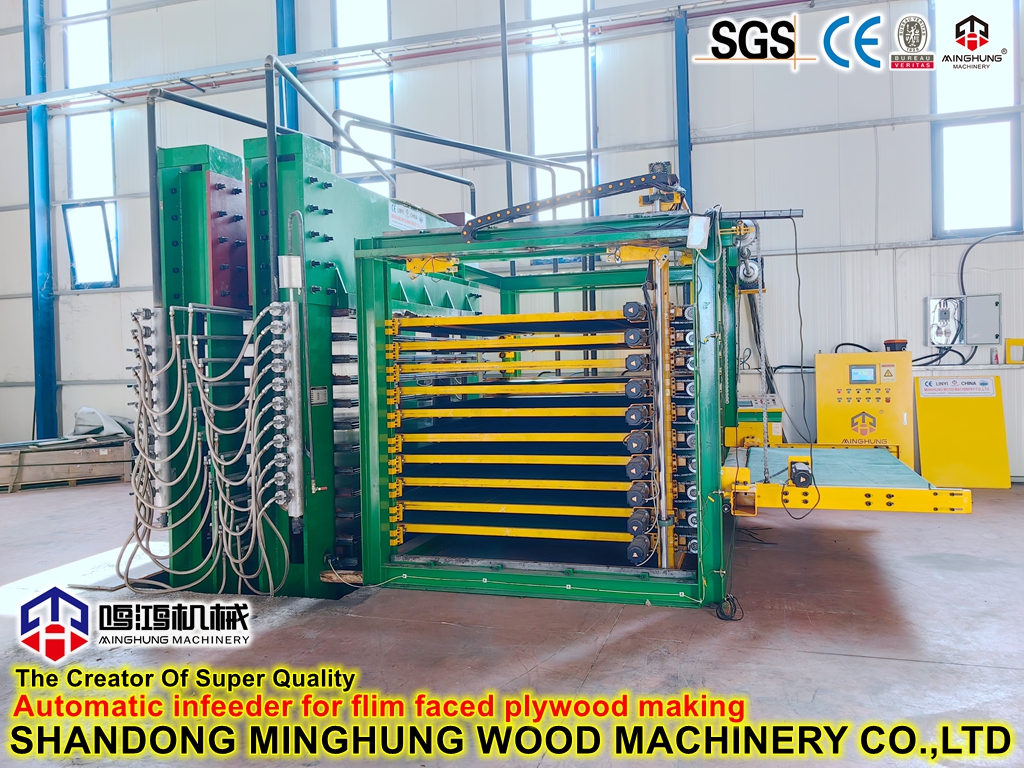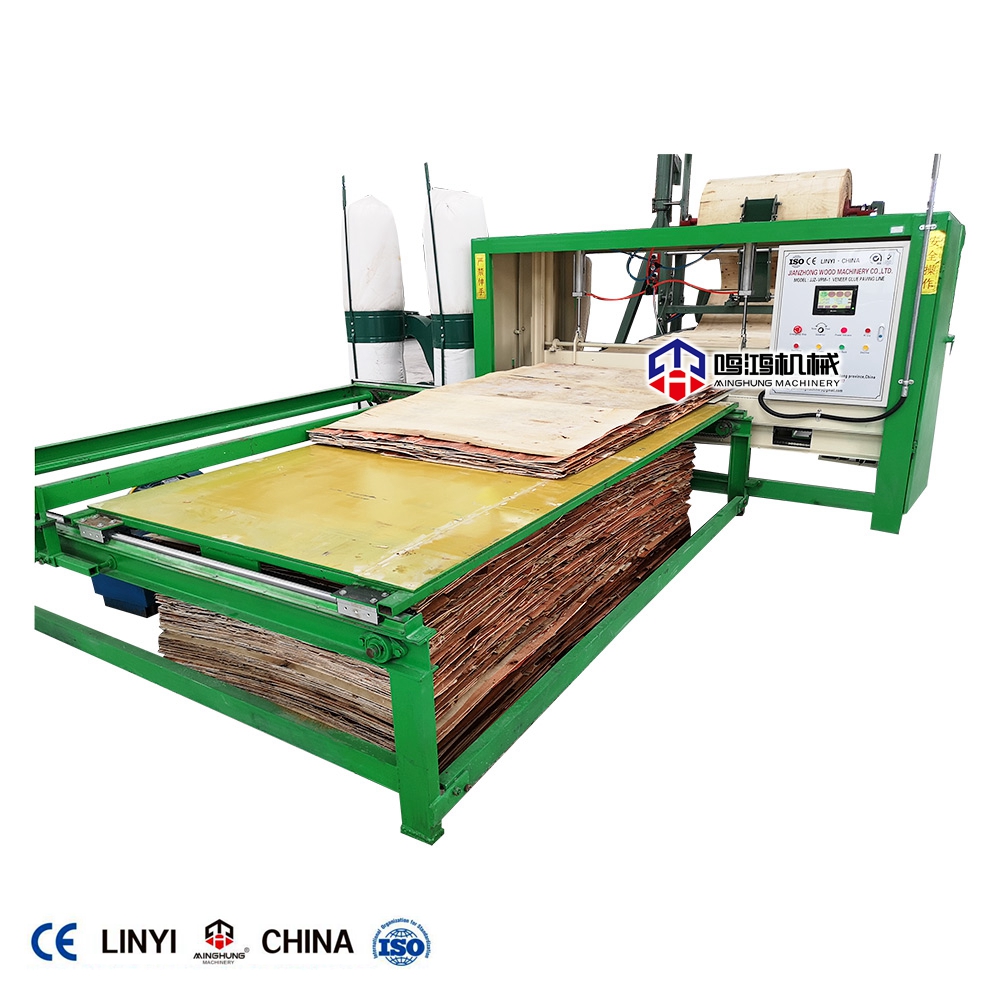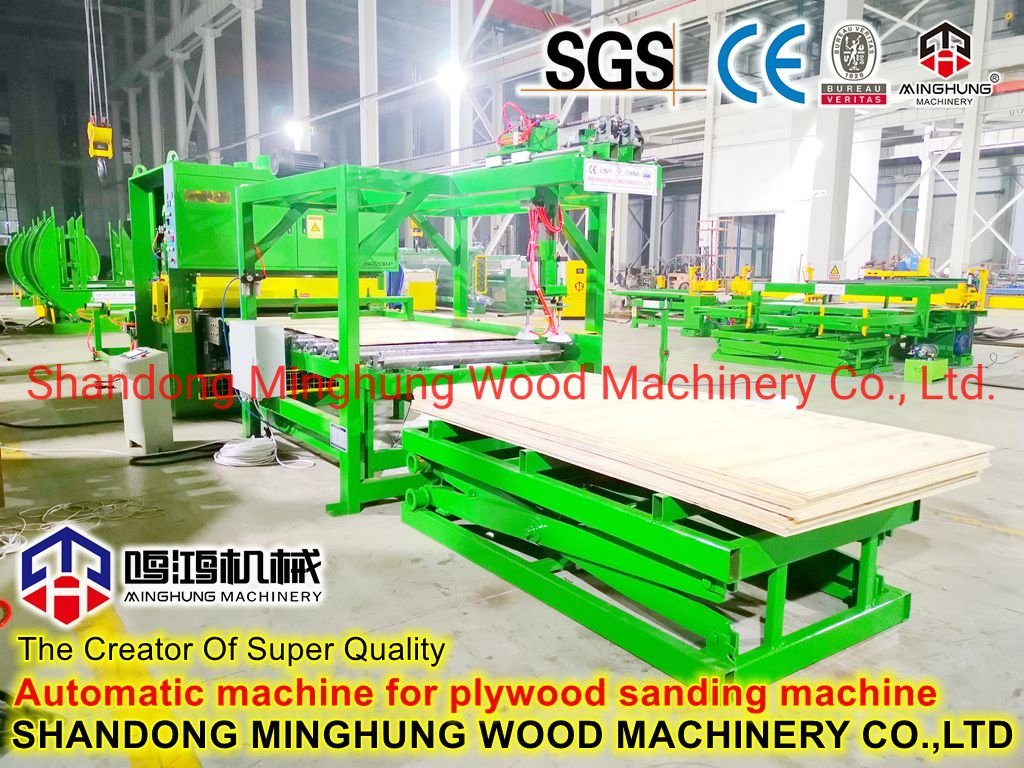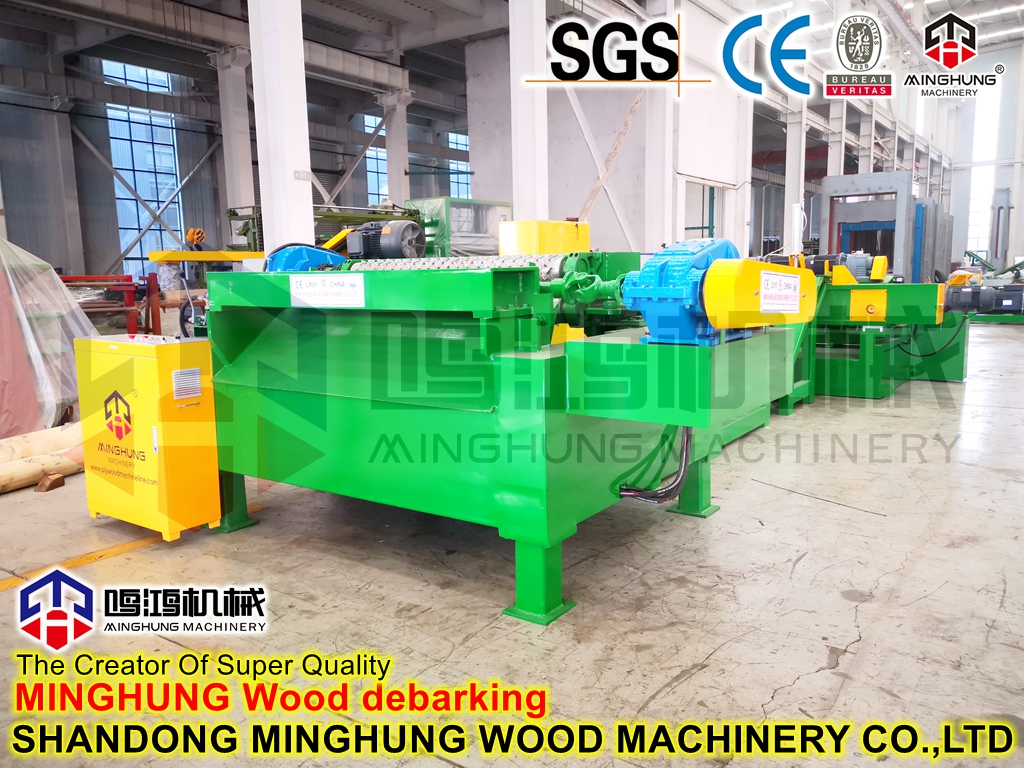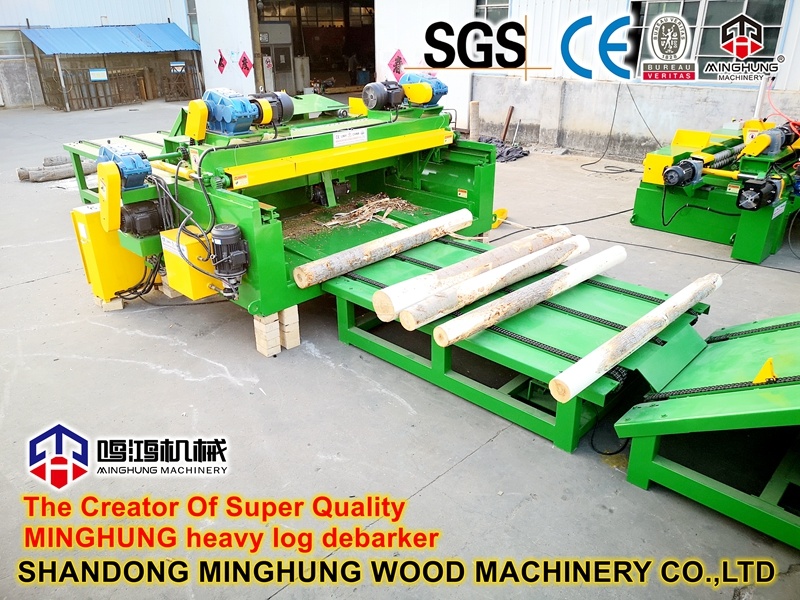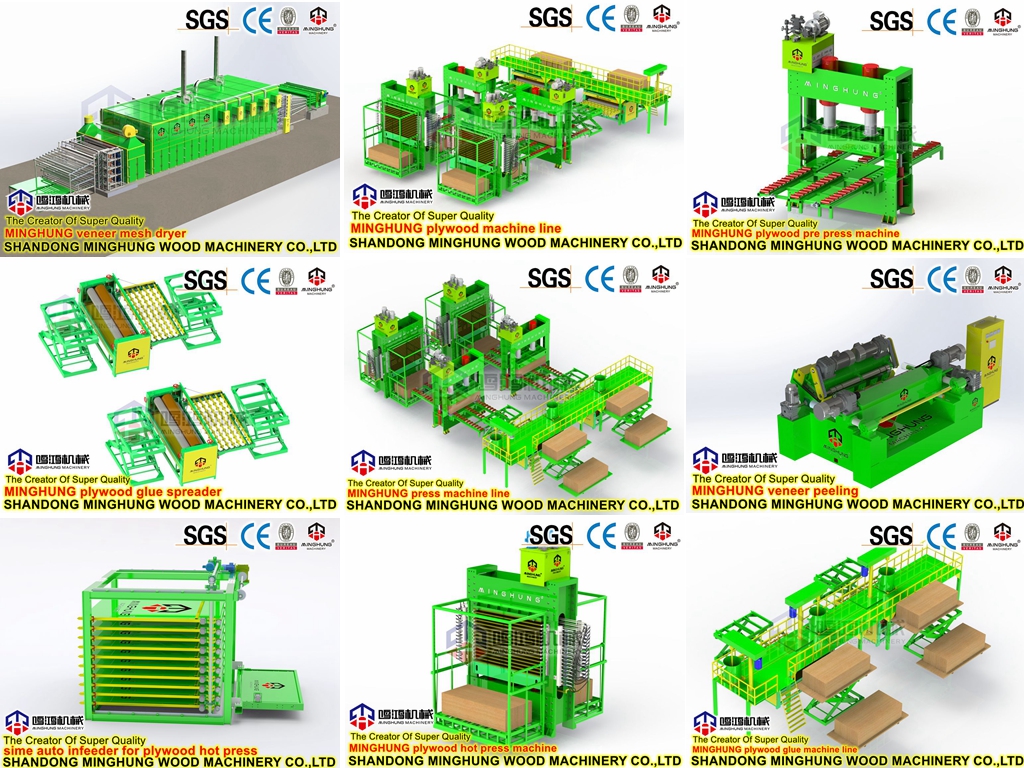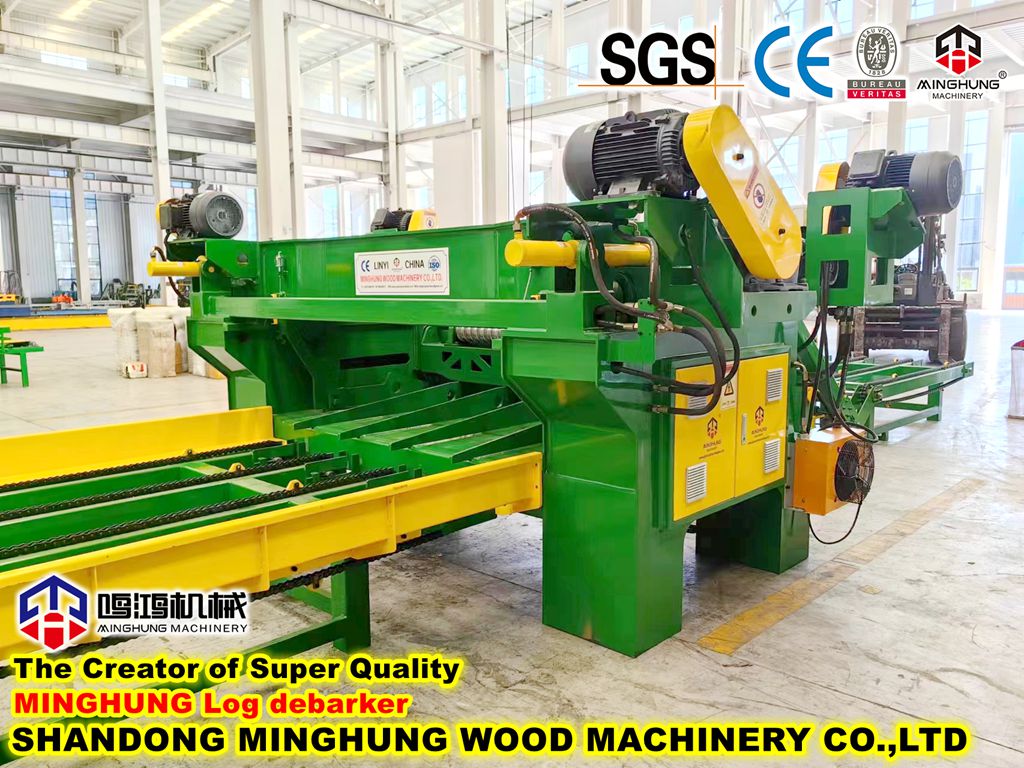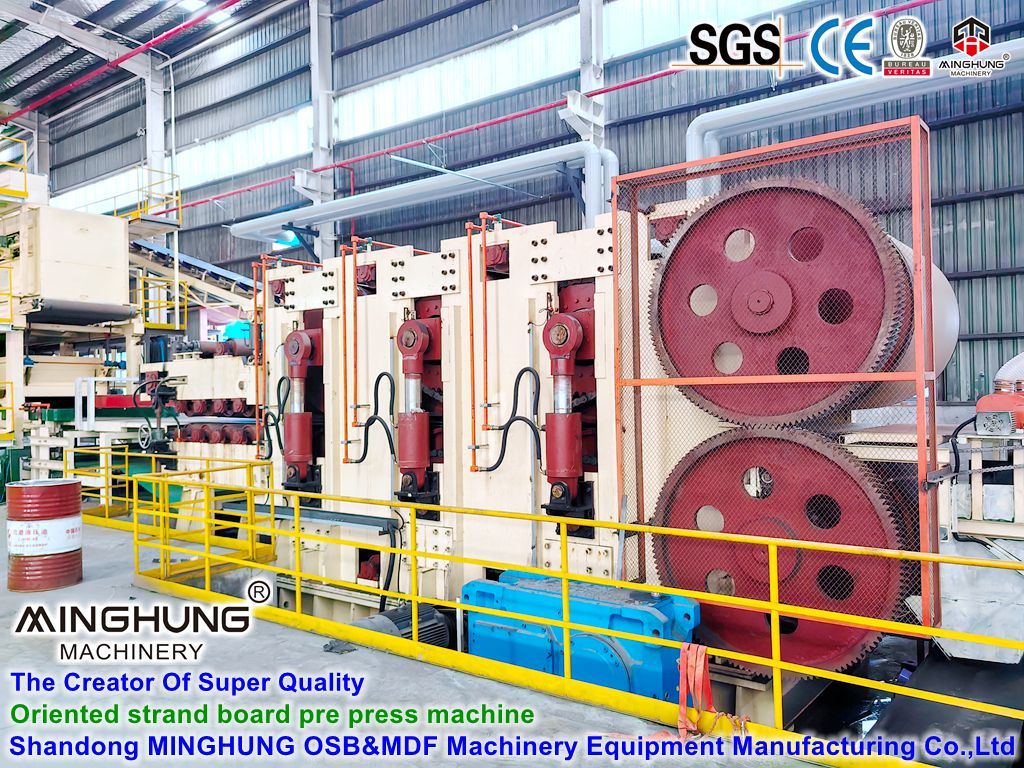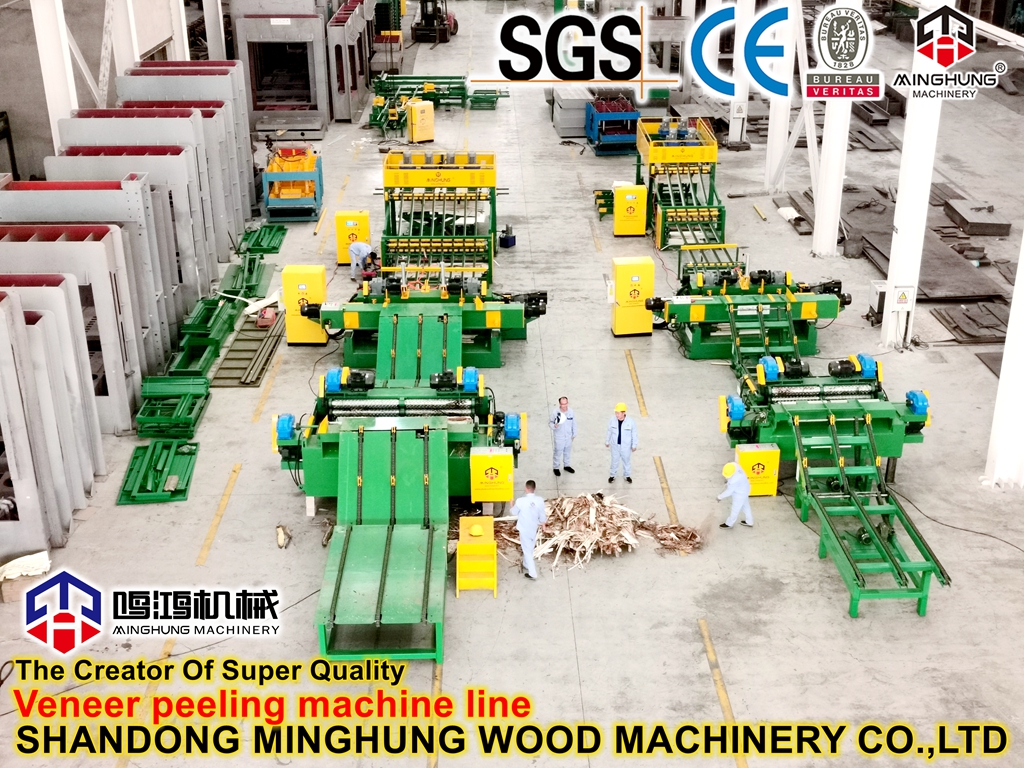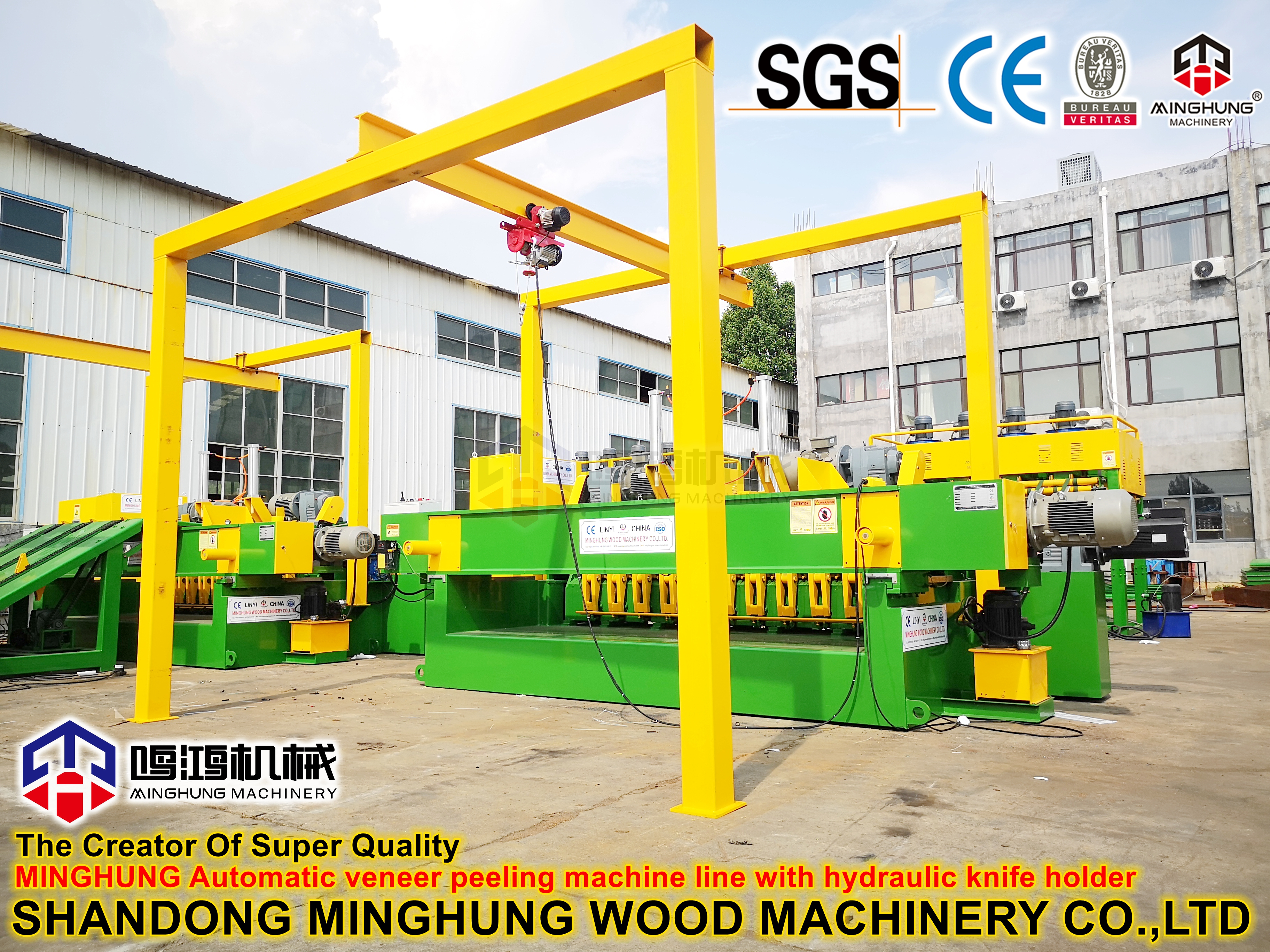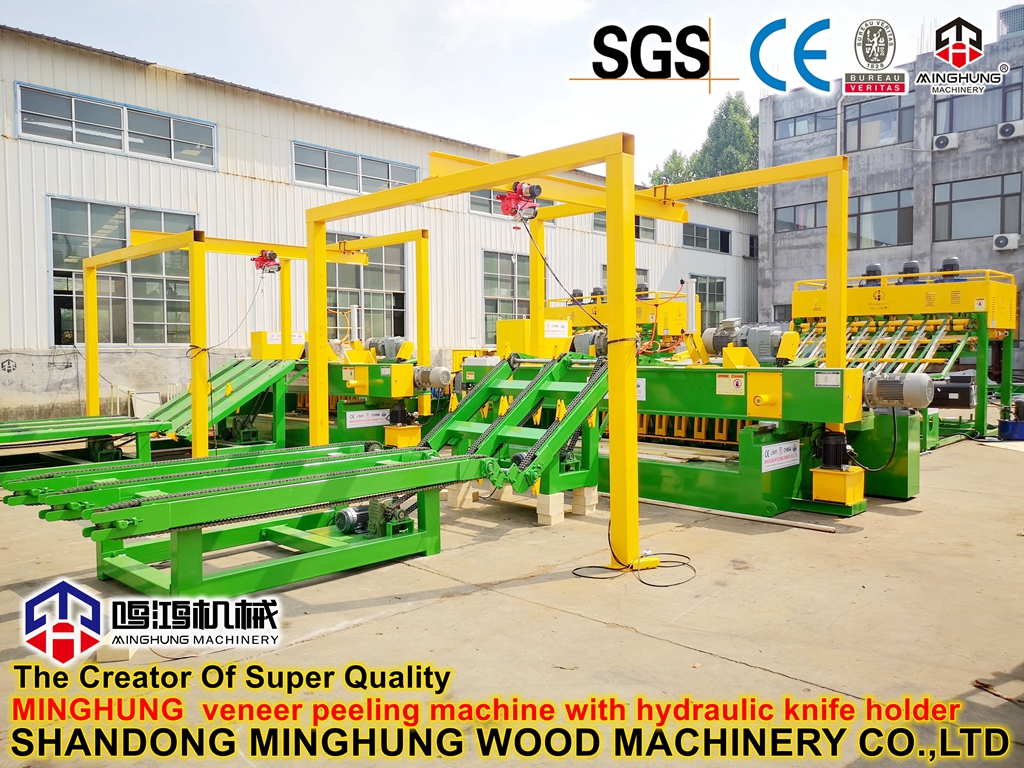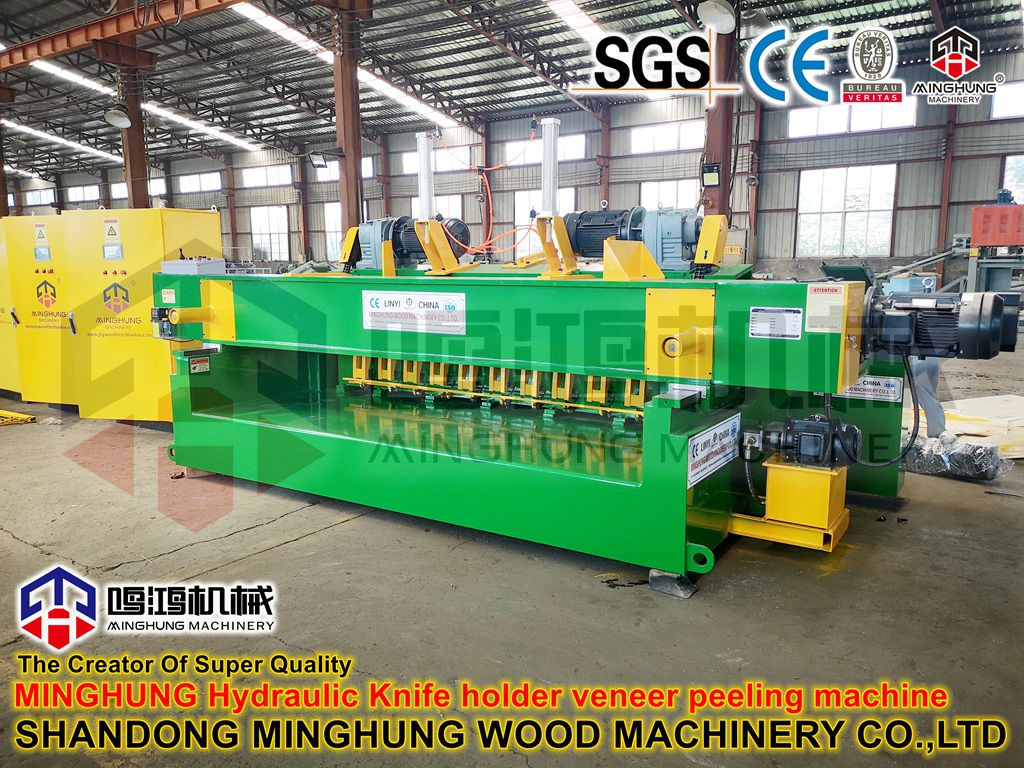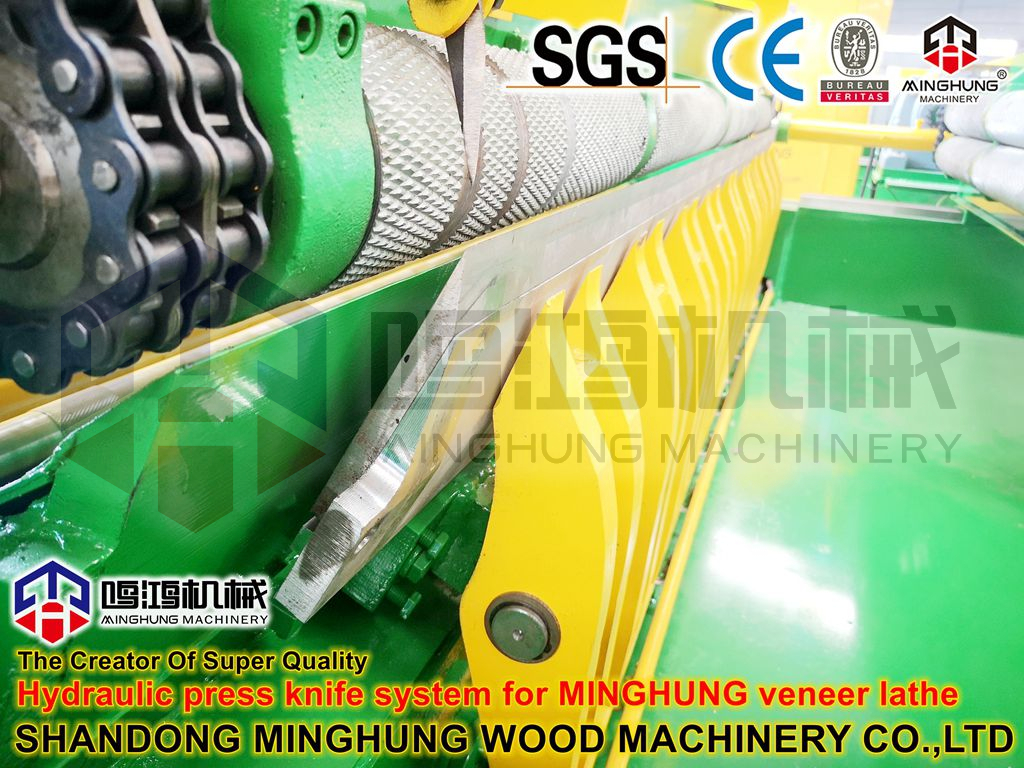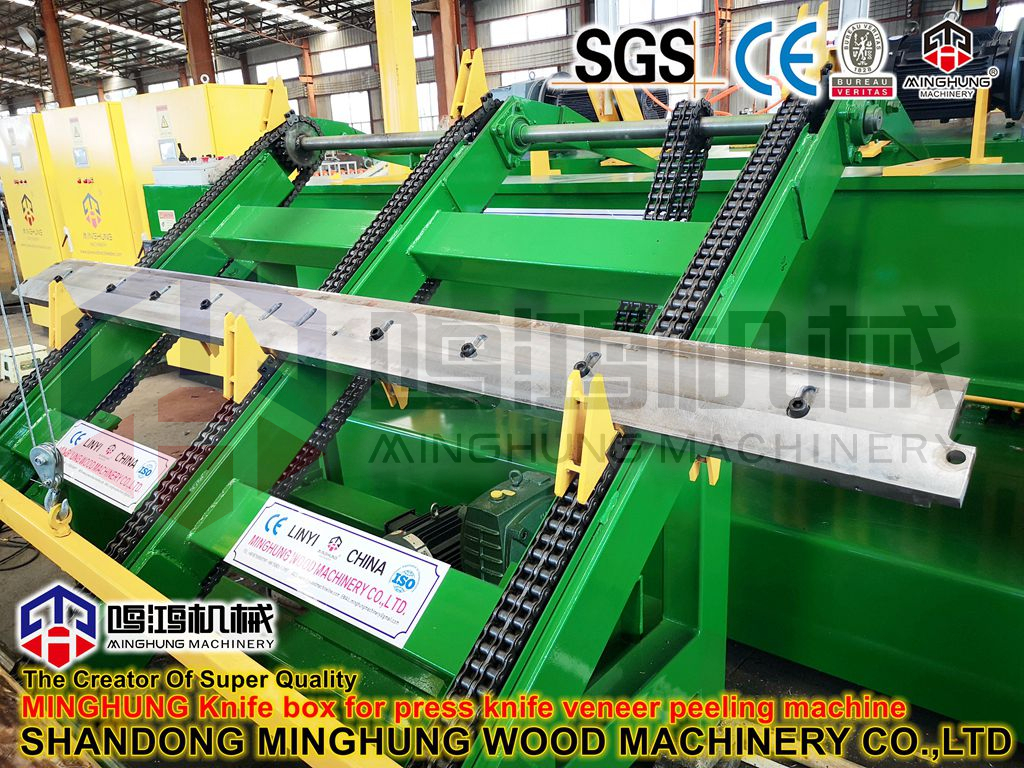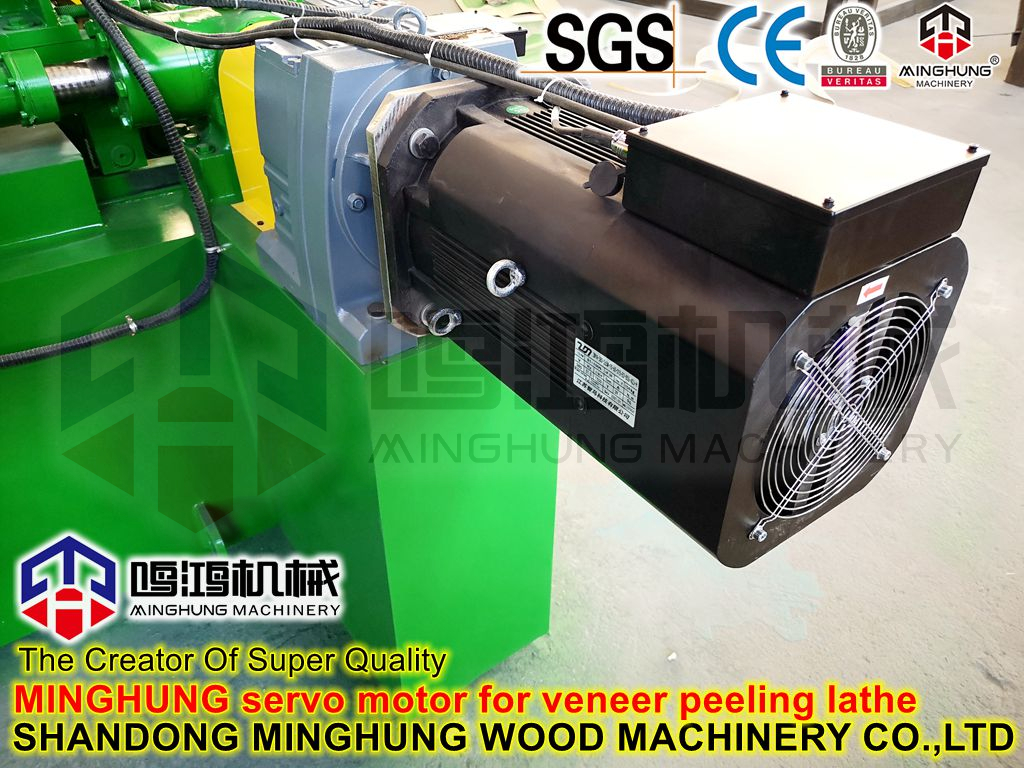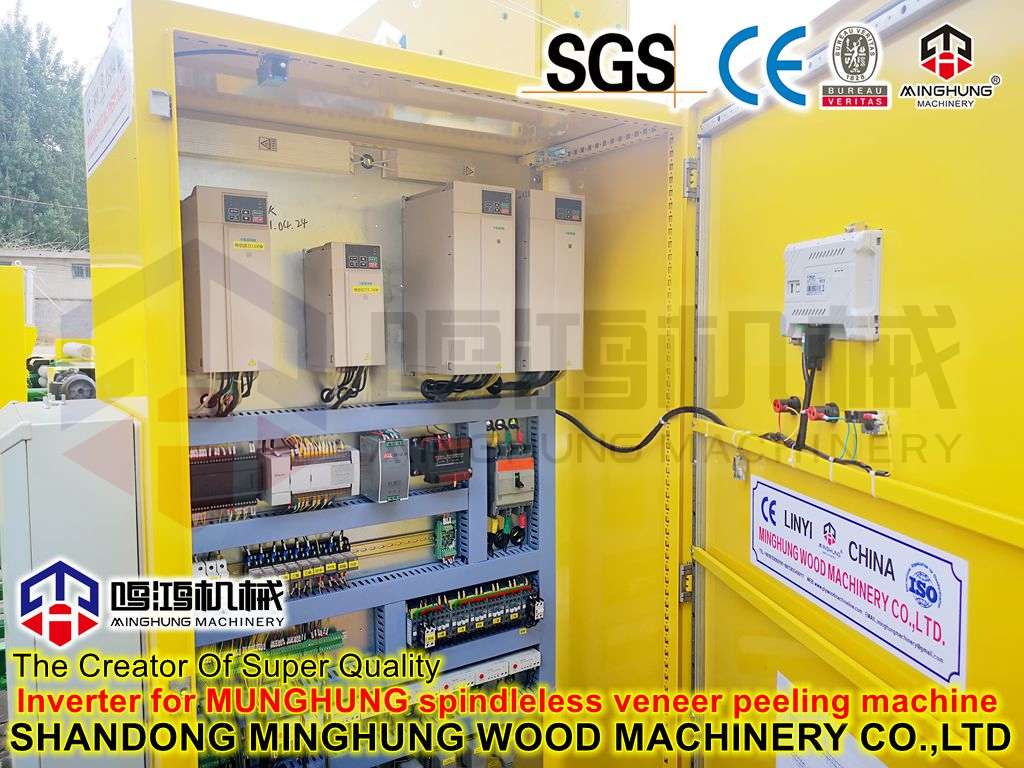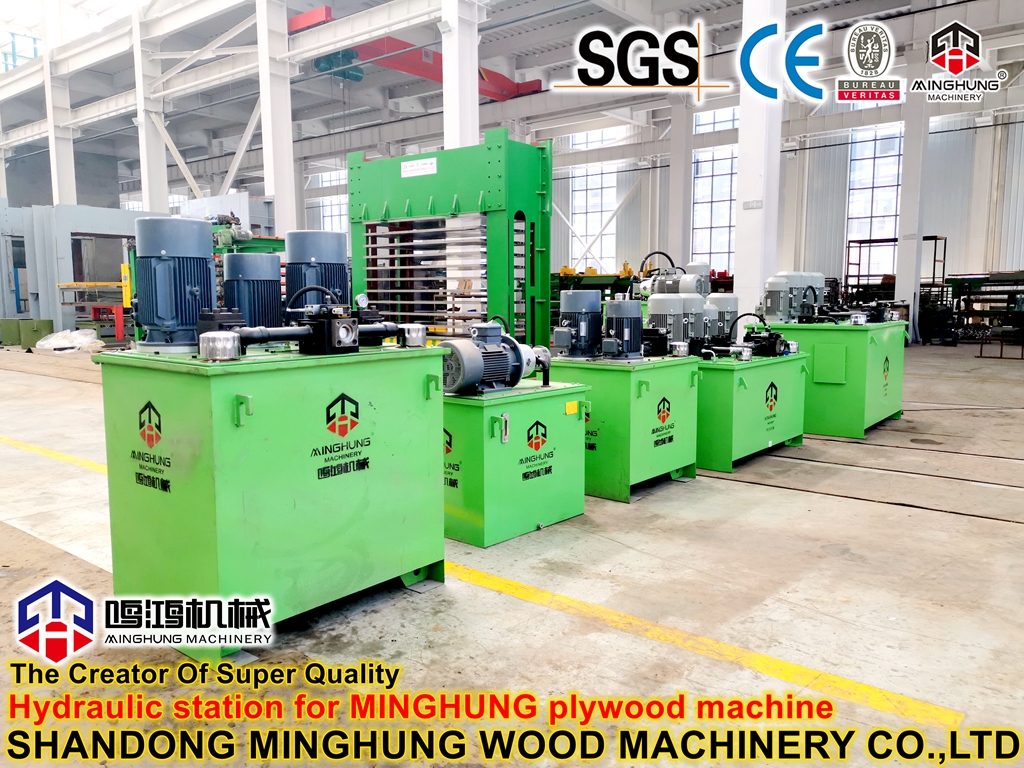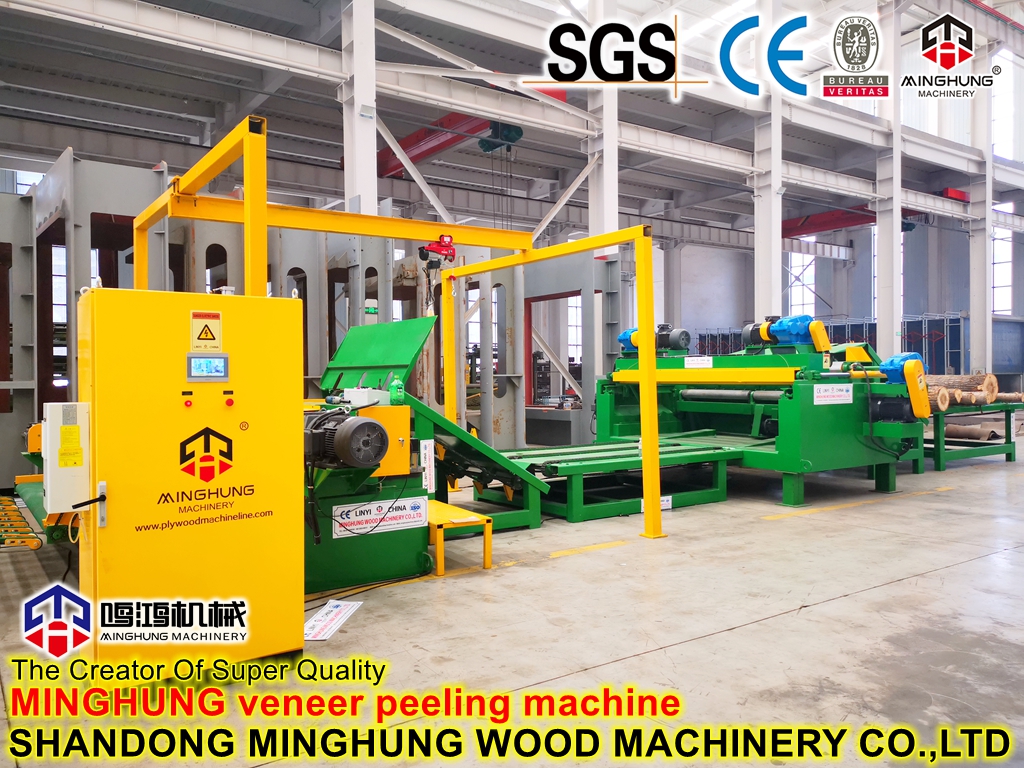Main Technical Parameters
I. Core Processing Capacity Parameters
These parameters determine the size of raw materials the machine can handle and the product specifications it can produce.
1. Maximum Peelable Log Length: The maximum length of logs the machine can process. This directly determines the width of the output veneer.
Common Range: 1300mm, 2600mm, 2700mm, 4100mm, etc. Can be customized according to customer requirements.
2. Peelable Log Diameter Range: The minimum and maximum log diameters that the machine can effectively peel.
Maximum Diameter: e.g., Φ400mm, Φ600mm, Φ800mm, etc. Determined by the clamping force of the spindles and the rigidity of the machine.
Minimum Diameter: Usually refers to the minimum core diameter at the end of peeling, e.g., Φ65mm, Φ80mm. The smaller this value, the higher the yield.
3. Veneer Thickness Range: The range of veneer thicknesses the machine can produce. Achieved by adjusting the ratio of the knife carriage feed rate to the spindle speed.
Common Range: Typically 0.8mm - 4.5mm. Some high-end models have a wider range, e.g., 0.5mm - 12mm. Can be adjusted steplessly or in steps within this range.
II. Power and Performance Parameters
These parameters reflect the core driving capability and performance level of the machine.
4. Main Motor Power: The power of the main motor that drives the spindles. Higher power means stronger driving capability, better suited for hardwoods and large-diameter logs.
Common Range: 15kW, 22kW, 30kW, 37kW, 45kW, etc.
5. Hydraulic System Working Pressure: The rated working pressure of the hydraulic system. Higher pressure means greater spindle clamping force and better system rigidity.
Common Range: 16 MPa, 20 MPa, 25 MPa, etc.
6. Spindle Speed / Peeling Linear Speed
Explanation:
Spindle Speed: The rotational speed of the spindles in revolutions per minute (rpm). It affects production efficiency.
Peeling Linear Speed: The tangential speed at the outer surface of the log (meters per second). This is a more scientific indicator as it directly relates to cutting quality and efficiency.
Common Range: Speed might be 0-150 rpm; linear speed might be 20-60 m/min.
III. Precision and Control Parameters
These parameters relate to the quality of the output veneer.
7. Veneer Thickness Tolerance: A key quality indicator measuring the thickness uniformity of the peeled veneer across its entire length and width. A smaller value indicates higher precision.
Typical Values: ±0.05 mm, ±0.02 mm, etc.
8. Control Mode: The level of automation of the equipment. Economy models might use manual buttons, while modern standards are PLC (Programmable Logic Controller) + Touch Screen (HMI).
IV. Mechanical Structure Parameters
9. Spindle Specification: Includes the length, diameter, and type of spindle head (tips). This directly affects clamping stability and the suitable log sizes.
10. Machine Overall Dimensions and Weight:Used to assess installation space and transportation requirements.
Typical Parameter Table Example
Parameter Category | Parameter Item | Typical Value |
Processing Capacity | Max. Peelable Log Length | 2600 mm |
| Peelable Log Diameter Range | Φ150 - Φ600 mm |
| Veneer Thickness Range | 0.8 - 3.5 mm |
Power & Performance | Main Motor Power | 30 kW |
| Hydraulic System Working Pressure | 20 MPa |
| Spindle Speed | 0-120 rpm |
Precision & Control | Veneer Thickness Tolerance | ±0.05 mm |
| Control Mode | PLC + Touch Screen HMI |
Mechanical Structure | Machine Weight | Approx. 6500 kg |
| Overall Dimension (LxWxH) | Approx. 4800x1800x1500 mm |


